A Step-by-Step Beginner’s Guide to Yoga
Yoga is a powerful practice that has been around for centuries. It is a form of exercise that combines physical movements, breathing techniques, and meditation to promote overall health and well-being. As a beginner, starting your yoga journey can be intimidating, but with the right guidance, it can be a life-changing experience.
In this article, I will provide a step-by-step introduction to yoga for beginners. I will cover the basics of yoga, including its history, philosophy, and different paths. I will also provide tips on how to start your yoga practice at home, essential yoga poses for beginners, and how to modify poses to fit your needs. Additionally, I will discuss the importance of breathing in yoga, the benefits of regular practice, and how to find a yoga instructor or studio.
Key Takeaways
- Yoga is a powerful practice that combines physical movements, breathing techniques, and meditation to promote overall health and well-being.
- As a beginner, it’s important to start with the basics of yoga, including its history, philosophy, and different paths.
- To start your yoga practice at home, focus on essential yoga poses for beginners, modify poses to fit your needs, and pay attention to your breath.
Understanding the Basics of Yoga

Yoga is a practice that involves physical postures, breathing techniques, meditation, and a focus on the mind-body connection. At its core, yoga is a way to achieve a state of balance and harmony in the body, mind, and spirit.
One of the most important aspects of yoga is posture. Yoga postures, or asanas, are designed to help improve flexibility, strength, and balance in the body. Each posture has its own unique benefits for the body and mind, and practicing a variety of postures can help ensure a well-rounded yoga practice.
In addition to physical postures, yoga also involves breathing techniques, known as pranayama. These techniques help to calm the mind and reduce stress, while also improving lung capacity and oxygenation of the blood.
Meditation is another important aspect of yoga, as it helps to quiet the mind and cultivate a sense of inner peace and stillness. By focusing on the breath or a particular mantra, meditation can help to reduce stress and anxiety, improve concentration, and increase feelings of well-being.
Yoga is also rooted in yogic philosophy, which emphasizes the importance of intention, discipline, and self-awareness. Many yoga classes incorporate these philosophical teachings into the practice, helping students to deepen their understanding of themselves and the world around them.
Whether you are looking to improve your physical health, reduce stress, or cultivate a deeper sense of inner peace, yoga can be a powerful tool. By focusing on the body, mind, and spirit, yoga can help you achieve a state of balance and harmony in your life.
Starting Your Yoga Practice at Home
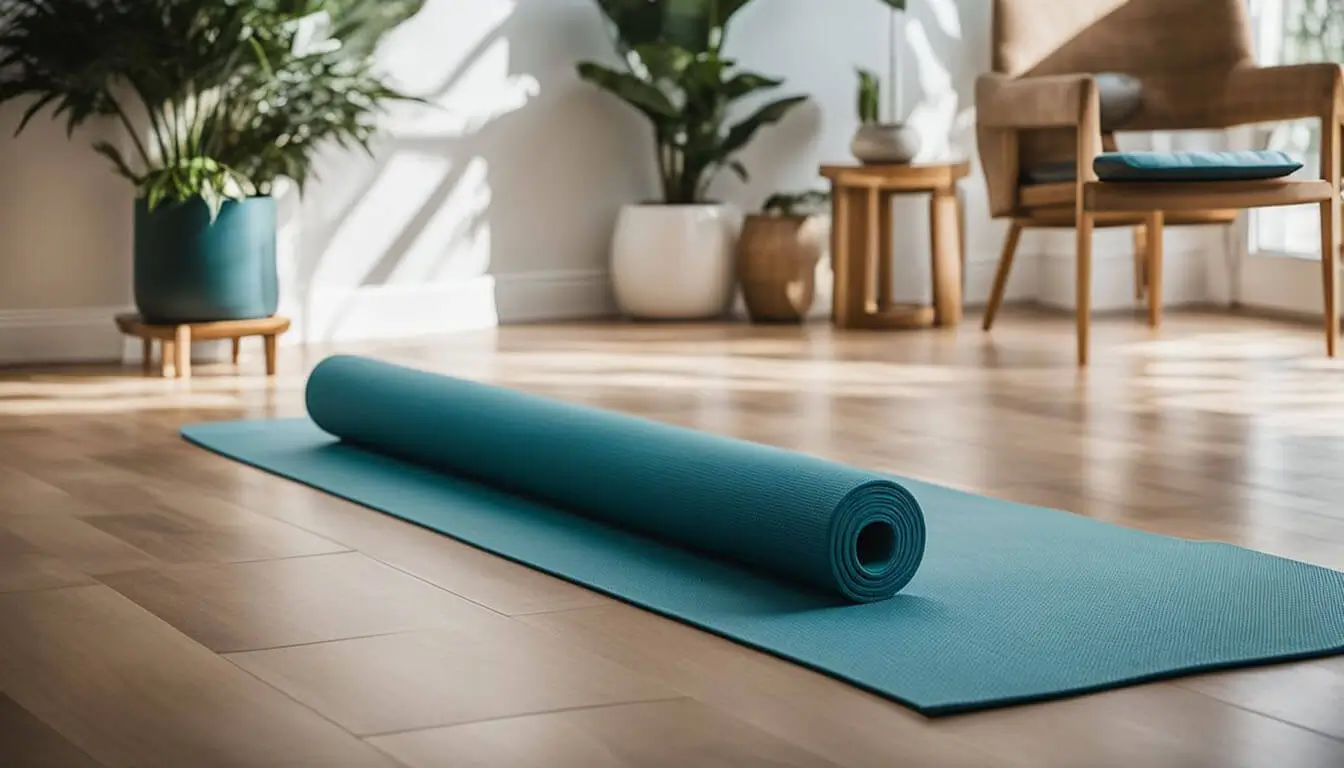 As a beginner, starting a yoga practice at home can seem daunting, but it’s actually quite simple. You only require a yoga mat and comfortable attire. If you have props such as blocks or straps, that’s great, but they are not necessary.
As a beginner, starting a yoga practice at home can seem daunting, but it’s actually quite simple. You only require a yoga mat and comfortable attire. If you have props such as blocks or straps, that’s great, but they are not necessary.
To start your daily yoga practice, find a quiet space in your home where you can roll out your mat. It’s important to create a peaceful environment where you can focus on your practice without any distractions. You can also light candles or incense to create a calming atmosphere.
If you’re not sure where to start, there are many yoga videos available online that are perfect for beginners. These videos provide step-by-step instructions and demonstrations of poses, making it easy to follow along.
When starting your home practice, it’s best to begin with simple poses and gradually work your way up to more challenging ones. Be sure to pay attention to your body and engage only in activities that feel comfortable for you. It’s important to never push yourself too far, as this can lead to injury.
In conclusion, starting a yoga practice at home is easy and can be done by anyone. With a little bit of dedication and consistency, you can enjoy the many benefits of a daily yoga practice. So roll out your mat, put on some comfortable clothing, and start your journey to a healthier, happier you!
Essential Yoga Poses for Beginners
 As a beginner to yoga, it can be overwhelming to know where to start. There are many yoga poses, or asanas, to choose from, and it can be difficult to know which ones to focus on. In this section, I will introduce you to some essential yoga poses for beginners that will help you build a strong foundation for your practice.
As a beginner to yoga, it can be overwhelming to know where to start. There are many yoga poses, or asanas, to choose from, and it can be difficult to know which ones to focus on. In this section, I will introduce you to some essential yoga poses for beginners that will help you build a strong foundation for your practice.
Mountain Pose
Mountain Pose, or Tadasana, is a foundational pose that is often used as a starting point for other standing poses. To practice Mountain Pose, stand with your feet hip-width apart, arms at your sides, and gaze forward. This position enhances posture, balance, and concentration.
Backbends
Backbends are a great way to stretch the front of the body and strengthen the back muscles. Cobra Pose, or Bhujangasana, is a gentle backbend that can be practiced by beginners. To practice Cobra Pose, lie on your stomach with your hands under your shoulders, elbows close to your body, and gaze forward. Breathe in and raise your chest from the floor, while keeping your elbows near your body.
Triangle Pose
Triangle Pose, or Trikonasana, is a standing pose that helps to stretch the legs, hips, and spine. To practice Triangle Pose, stand with your feet wide apart, toes pointing forward, and arms at your sides. Turn your left foot out to the side, and extend your left arm out to the side, reaching towards your left foot. Place your right hand on your right hip.
Plank Pose
Plank Pose, or Phalakasana, is a great pose for building core strength. To practice Plank Pose, start in a push-up position with your arms straight and hands shoulder-width apart. Maintain a straight alignment from your head to your heels, activating your core muscles.
Downward-Facing Dog
Downward-Facing Dog, or Adho Mukha Svanasana, is a popular pose that helps to stretch the hamstrings, calves, and spine. To begin Downward-Facing Dog, position yourself on all fours, with your hands spread shoulder-width apart and your knees positioned hip-width apart. Lift your hips up and back, straightening your arms and legs, and pressing your heels towards the ground.
Tree Pose
Tree Pose, or Vrksasana, is a balancing pose that helps to improve focus and concentration. Transfer your weight to your left foot, then rest your right foot on your left thigh, pressing your foot into your thigh and your thigh into your foot. Bring your hands to your heart center, and gaze forward.
These are just a few of the essential yoga poses for beginners. As you continue to practice yoga, you will discover many more poses that will help you build strength, flexibility, and balance. Remember to listen to your body, and never push yourself beyond your limits.
Different Styles of Yoga
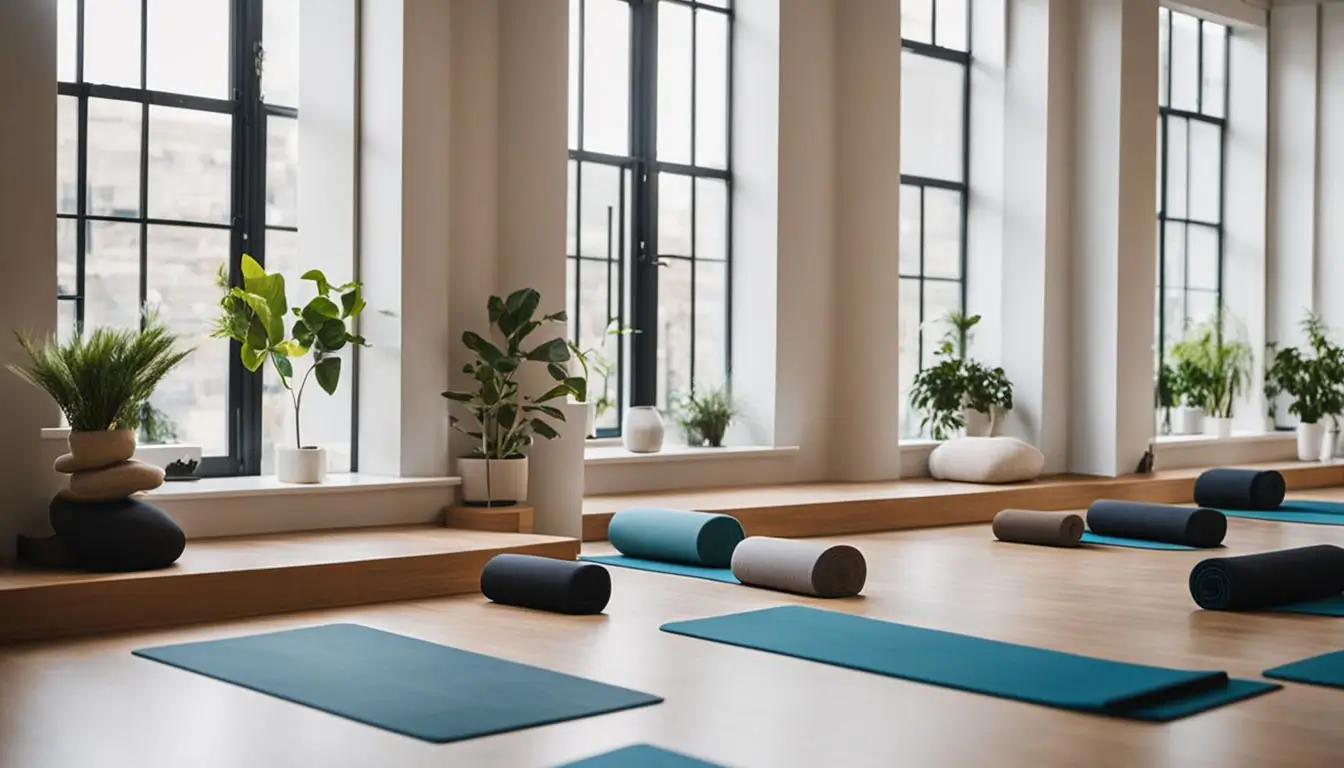 As a beginner, it can be overwhelming to choose a yoga style that suits your needs. Numerous yoga styles offer their own distinct advantages. Here are some of the most widely practiced ones:
As a beginner, it can be overwhelming to choose a yoga style that suits your needs. Numerous yoga styles offer their own distinct advantages. Here are some of the most widely practiced ones:
Hatha Yoga
Hatha yoga is a gentle form of yoga that focuses on breathing and basic yoga poses. This style of yoga is great for beginners because it is slow-paced and allows you to learn the basic poses at your own pace. Hatha yoga is also great for stress relief and improving flexibility.
Vinyasa
Vinyasa yoga is a more fast-paced style of yoga that focuses on flowing from one pose to the next. This style of yoga is great for building strength and endurance, as well as improving flexibility. Vinyasa yoga is also great for stress relief because it requires you to focus on your breath and movement.
Ashtanga
Ashtanga yoga is a more intense form of yoga that focuses on a specific sequence of poses. This style of yoga is great for building strength and endurance, as well as improving flexibility. Ashtanga yoga is also great for stress relief because it requires you to focus on your breath and movement.
Hot Yoga
Hot yoga involves practicing yoga in a heated room. This style of yoga is great for building strength and endurance, as well as improving flexibility. Hot yoga is also great for stress relief because it requires you to focus on your breath and movement.
Bikram
Bikram yoga is a specific type of hot yoga that follows a specific sequence of 26 poses. This style of yoga is great for building strength and endurance, as well as improving flexibility. Bikram yoga is also great for stress relief because it requires you to focus on your breath and movement.
Flow Class
Flow class is a style of yoga that focuses on flowing from one pose to the next. This style of yoga is great for building strength and endurance, as well as improving flexibility. Flow class is also great for stress relief because it requires you to focus on your breath and movement.
As a beginner, it is important to try out different styles of yoga to find the one that suits your needs. Feel free to experiment with various styles to discover what suits you best.
Importance of Breathing in Yoga
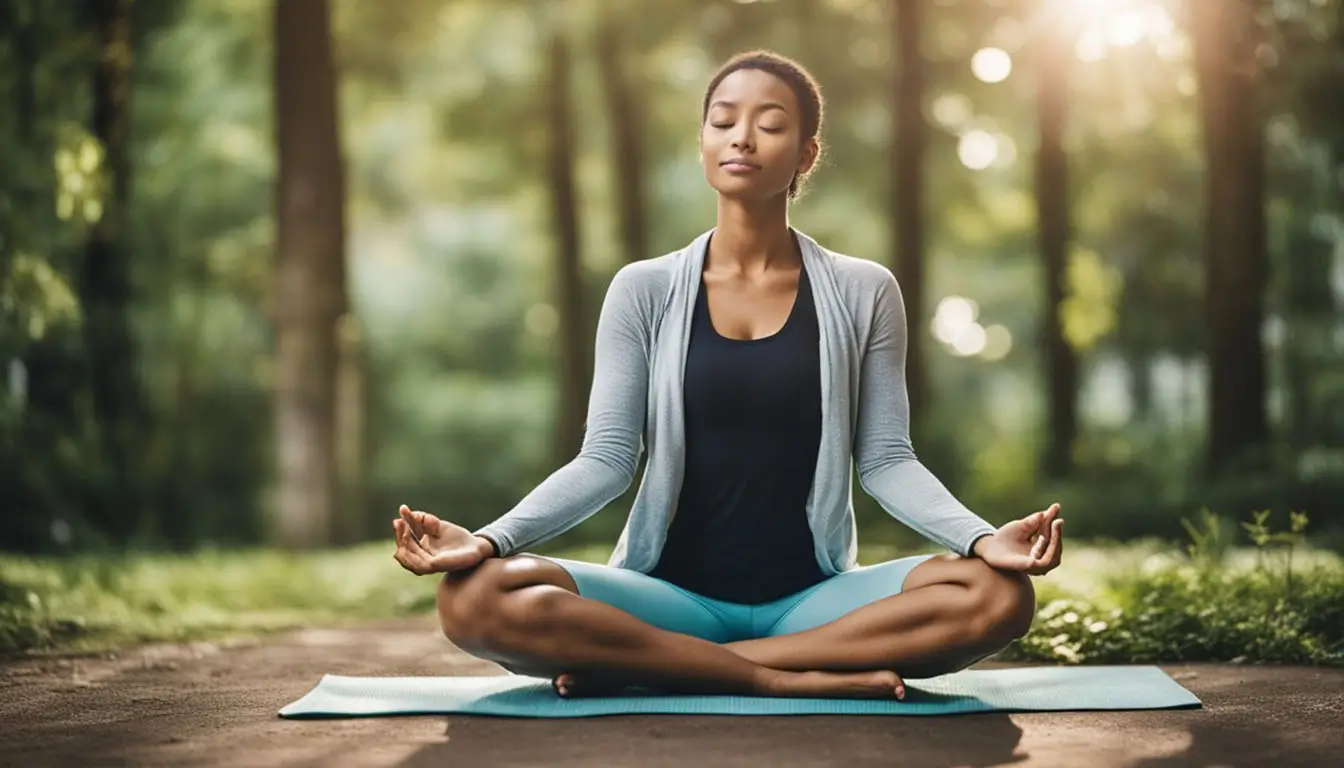 Breathing is a fundamental aspect of practicing yoga. Proper breathing techniques help to bring relaxation and focus to the mind and body, and can enhance the benefits of yoga postures. In fact, breathing is such an important part of yoga that it has its own name: pranayama.
Breathing is a fundamental aspect of practicing yoga. Proper breathing techniques help to bring relaxation and focus to the mind and body, and can enhance the benefits of yoga postures. In fact, breathing is such an important part of yoga that it has its own name: pranayama.
One of the most common breathing techniques in yoga is abdominal breathing, which involves breathing deeply into the belly rather than the chest. This type of breathing can help to reduce stress and calm the mind, making it an excellent tool for relaxation.
Another popular breathing technique in yoga is ujjayi, or “victorious breath.” This technique involves breathing in and out through the nose while slightly constricting the back of the throat, creating a gentle “ocean-like” sound. Ujjayi breath can help to increase focus and concentration, and can also be used to build heat in the body during more vigorous yoga practices.
Proper breathing techniques are also important for maintaining proper alignment and avoiding injury during yoga postures. By breathing deeply and engaging the core muscles, practitioners can create a strong foundation for their practice and ensure that they are moving in a safe and effective way.
In summary, breathing is a crucial component of any yoga practice. By incorporating proper breathing techniques such as abdominal breathing and ujjayi breath, practitioners can enhance the benefits of their yoga postures, increase relaxation and focus, and maintain proper alignment and safety during their practice.
Benefits of Regular Yoga Practice
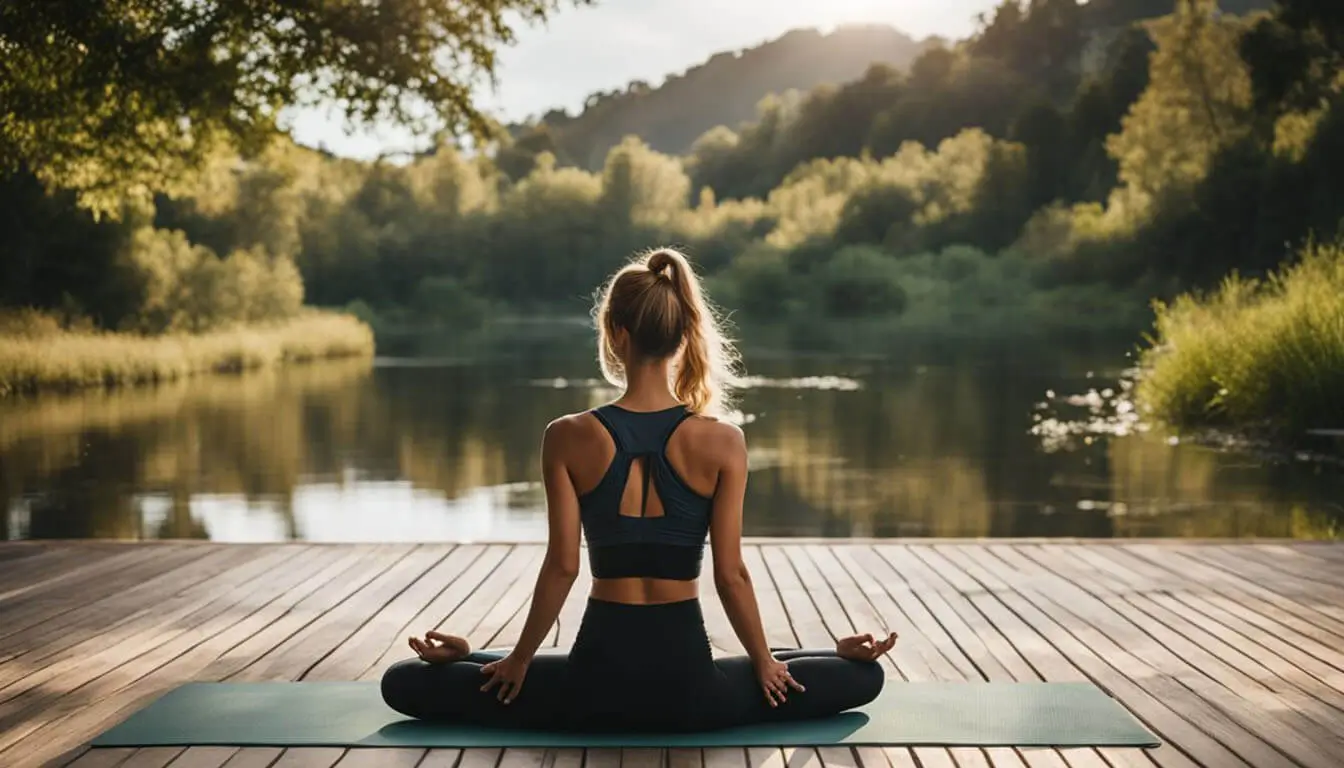 I have found that practicing yoga regularly has numerous benefits for both the mind and body. One of the most notable benefits is improved flexibility. Through regular practice, I have noticed that my muscles have become more limber, and I am able to move more freely.
I have found that practicing yoga regularly has numerous benefits for both the mind and body. One of the most notable benefits is improved flexibility. Through regular practice, I have noticed that my muscles have become more limber, and I am able to move more freely.
In addition to improved flexibility, yoga has also helped me build strength. Many yoga poses require holding your bodyweight in different positions, which can help build muscle in various parts of your body. This has helped me feel stronger and more capable in my daily life.
Another benefit of yoga is improved balance. Many yoga poses require you to balance on one leg or hold a position while standing on your toes. Through regular practice, I have found that my balance has improved, which has helped me feel more stable and confident in my movements.
Yoga has also helped me find relaxation and mindfulness. Many yoga classes include breathing exercises and meditation, which can help calm the mind and reduce stress. Through regular practice, I have found that I am better able to manage my stress levels and feel more at ease.
In addition to these benefits, yoga can also improve stamina, mobility, and overall well-being. There are numerous physical and health benefits associated with regular yoga practice, including improved circulation, better digestion, and reduced inflammation.
Overall, I have found that incorporating yoga into my routine has been a positive and rewarding experience, both physically and mentally.
Modifying Yoga Poses
 As a beginner, it’s important to remember that yoga is a practice, not a competition. It’s okay to modify poses to fit your body’s needs and limitations. Modifying poses can help you build strength and flexibility gradually, and prevent injury.
As a beginner, it’s important to remember that yoga is a practice, not a competition. It’s okay to modify poses to fit your body’s needs and limitations. Modifying poses can help you build strength and flexibility gradually, and prevent injury.
One way to modify poses is to use props such as blocks, straps, and blankets. For example, if you have tight hamstrings, you can use a block under your hand in a forward fold to bring the ground closer to you. If you have tight hips, you can sit on a blanket to elevate your hips in seated poses.
Another way to modify poses is to use variations. Variations are similar poses that offer a different level of challenge. For example, if you can’t do a full plank pose, you can do a modified plank on your knees. If you can’t do a full wheel pose, you can do a bridge pose instead.
It’s also important to listen to your body and honor your range of motion. If a position doesn’t feel comfortable, avoid overexerting yourself. Instead, back off and find a variation or modification that feels comfortable.
Keep in mind that yoga is an individual journey, and every body is unique. Don’t compare yourself to others in the class, and don’t feel like you have to do every pose perfectly. With time and practice, you will find your own rhythm and flow in your practice.
Yoga Attire and Accessories
When it comes to yoga, comfort is key. Loose, breathable clothing made from natural fabrics such as cotton or bamboo is ideal. Avoid wearing anything too tight or restrictive, as this can limit your movement and make it difficult to hold certain poses.
While there are specific clothes marketed as “yoga wear,” you don’t need to invest in expensive gear to get started. A simple t-shirt and pants or shorts that allow for a full range of motion will suffice. It’s also a good idea to bring a sweatshirt or light jacket to wear during the final relaxation pose, as your body temperature may drop.
In addition to clothing, there are a few accessories that can enhance your yoga practice. A yoga mat is essential for providing a non-slip surface to practice on, as well as cushioning for your joints. If you’re practicing at a studio, the studio may provide mats for you to use, but it’s always a good idea to bring your own.
Other optional accessories include yoga blocks, which can be used to modify poses or provide support, and straps, which can help you deepen your stretches. Again, these are not necessary for beginners, but they can be helpful as you progress in your practice.
Finally, it’s important to remember that yoga is a barefoot practice. Shoes and socks should be removed before class begins, and yoga socks are not necessary. However, if you prefer to wear something on your feet, opt for non-slip socks or shoes with a thin, flexible sole.
Yoga and Wellness
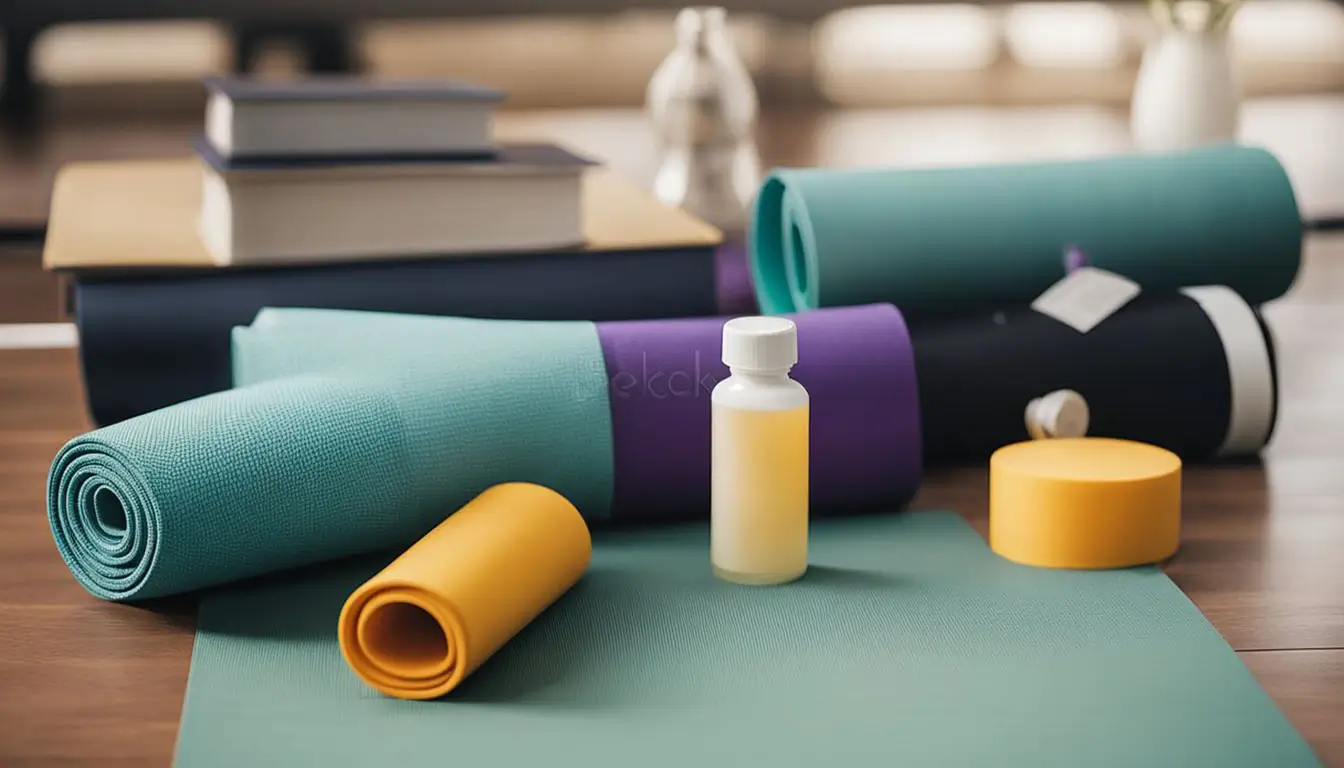 As someone who has been practicing yoga for a few years now, I can attest to the many benefits it has had on my overall wellness. Yoga is not just about physical exercise, it’s a holistic practice that can help improve mental, emotional, and spiritual well-being as well.
As someone who has been practicing yoga for a few years now, I can attest to the many benefits it has had on my overall wellness. Yoga is not just about physical exercise, it’s a holistic practice that can help improve mental, emotional, and spiritual well-being as well.
One aspect of yoga that I find particularly helpful is yoga therapy. Yoga therapy is the use of yoga practices, such as postures, breathwork, and meditation, to help individuals with medical conditions or mental health issues. It can be a great complement to traditional medical treatments and can help manage symptoms of various conditions.
For example, studies have shown that yoga can be helpful in managing chronic pain, reducing anxiety and depression, and improving sleep quality. It’s important to note that yoga therapy should always be done under the guidance of a qualified yoga therapist or healthcare professional.
In addition to yoga therapy, yoga can also be a great tool for general wellness. Regular yoga practice can help improve flexibility, strength, balance, and posture. It can also help reduce stress and improve overall mental and emotional well-being.
If you’re new to yoga, I recommend starting with a beginner’s class or video and slowly working your way up to more advanced practices. It’s important to listen to your body and not push yourself too hard, especially if you have any medical conditions or injuries.
Overall, incorporating yoga into your wellness routine can have many benefits for both the body and mind. Whether you’re looking to manage a medical condition or simply improve your overall well-being, yoga is definitely worth exploring.
The Spiritual Aspects of Yoga
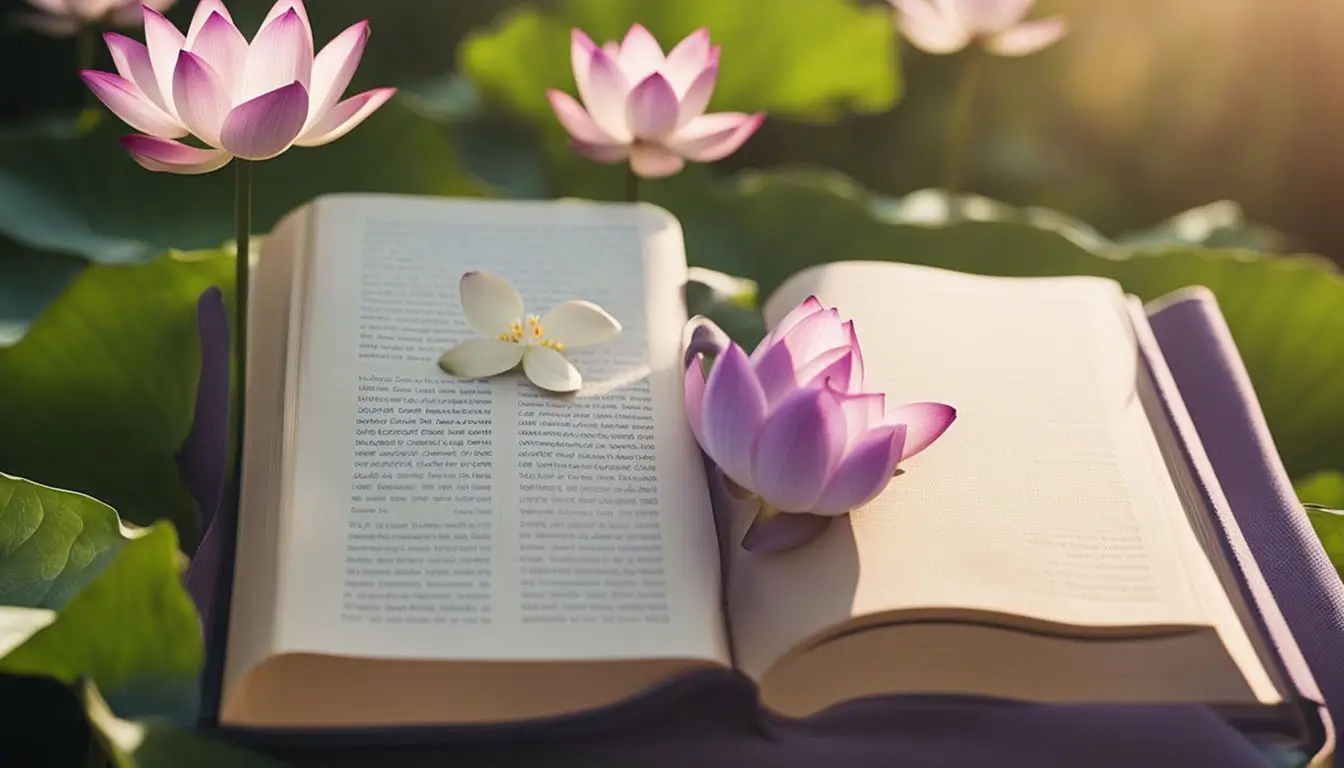 Yoga is not just a physical practice but also a spiritual one. It is a way to connect with our inner selves and find inner peace. Through yoga, we can learn spiritual techniques that help us achieve enlightenment and oneness with the universe.
Yoga is not just a physical practice but also a spiritual one. It is a way to connect with our inner selves and find inner peace. Through yoga, we can learn spiritual techniques that help us achieve enlightenment and oneness with the universe.
For me, yoga has been a way to find inner peace. It has helped me to let go of stress and anxiety and to connect with my inner self. Through yoga, I have learned to be more present in the moment and to appreciate the beauty of life.
One of the spiritual aspects of yoga is the focus on breath. In yoga, we learn to control our breath, which helps us to calm our minds and find inner peace. By focusing on our breath, we can quiet our thoughts and connect with our inner selves.
Another spiritual aspect of yoga is the focus on mindfulness. Through yoga, we learn to be more present in the moment and to appreciate the beauty of life. By being mindful, we can let go of stress and anxiety and find inner peace.
Yoga also teaches us to let go of our ego and to connect with something greater than ourselves. Through yoga, we can learn to see the interconnectedness of all things and to appreciate the beauty of the universe.
In conclusion, the spiritual aspects of yoga are an important part of the practice. Through yoga, we can learn to find inner peace, connect with our inner selves, and achieve enlightenment and oneness with the universe.
Understanding Yoga Anatomy
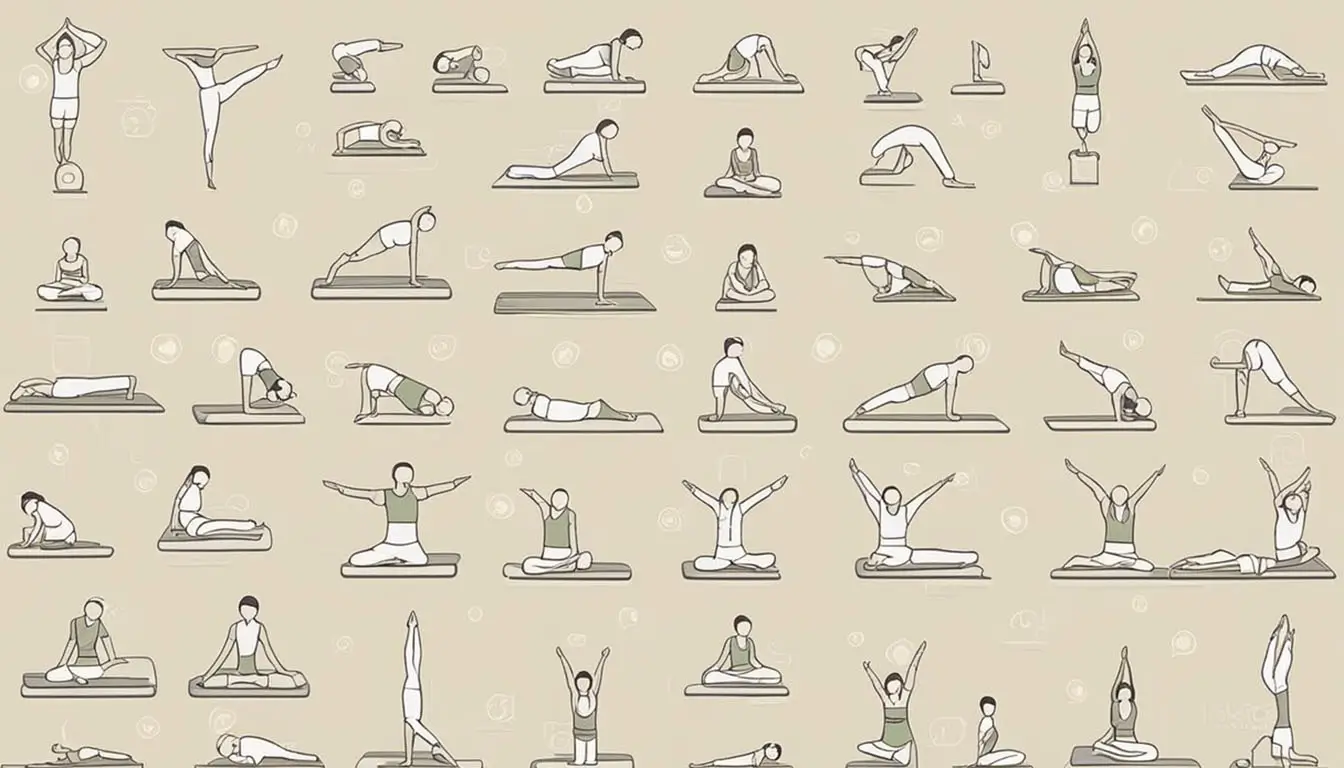 As a beginner to yoga, it is important to understand the basic anatomy of the body. This will help you to properly align your body during yoga poses and prevent injuries.
As a beginner to yoga, it is important to understand the basic anatomy of the body. This will help you to properly align your body during yoga poses and prevent injuries.
Yoga anatomy involves understanding how different body parts perform different actions like flexion and extension. For example, the hip joint is a ball-and-socket joint that allows for a wide range of motion. Understanding this can help you to properly perform poses like Warrior II, which involves a deep lunge and a wide stance.
Proper alignment is crucial in yoga to ensure that you are getting the most out of each pose and avoiding injury. For example, in downward-facing dog, it is important to keep your wrists directly under your shoulders and your feet hip-width apart. This helps to distribute your weight evenly and prevent strain on your wrists and shoulders.
In addition to proper alignment, understanding yoga anatomy can also help you to deepen your practice. For example, learning about the muscles involved in a pose like the forward fold can help you to engage those muscles more effectively and get a deeper stretch.
Overall, taking the time to learn about yoga anatomy can greatly improve your practice and help you to stay safe and injury-free.
English Translations of Yoga Terms
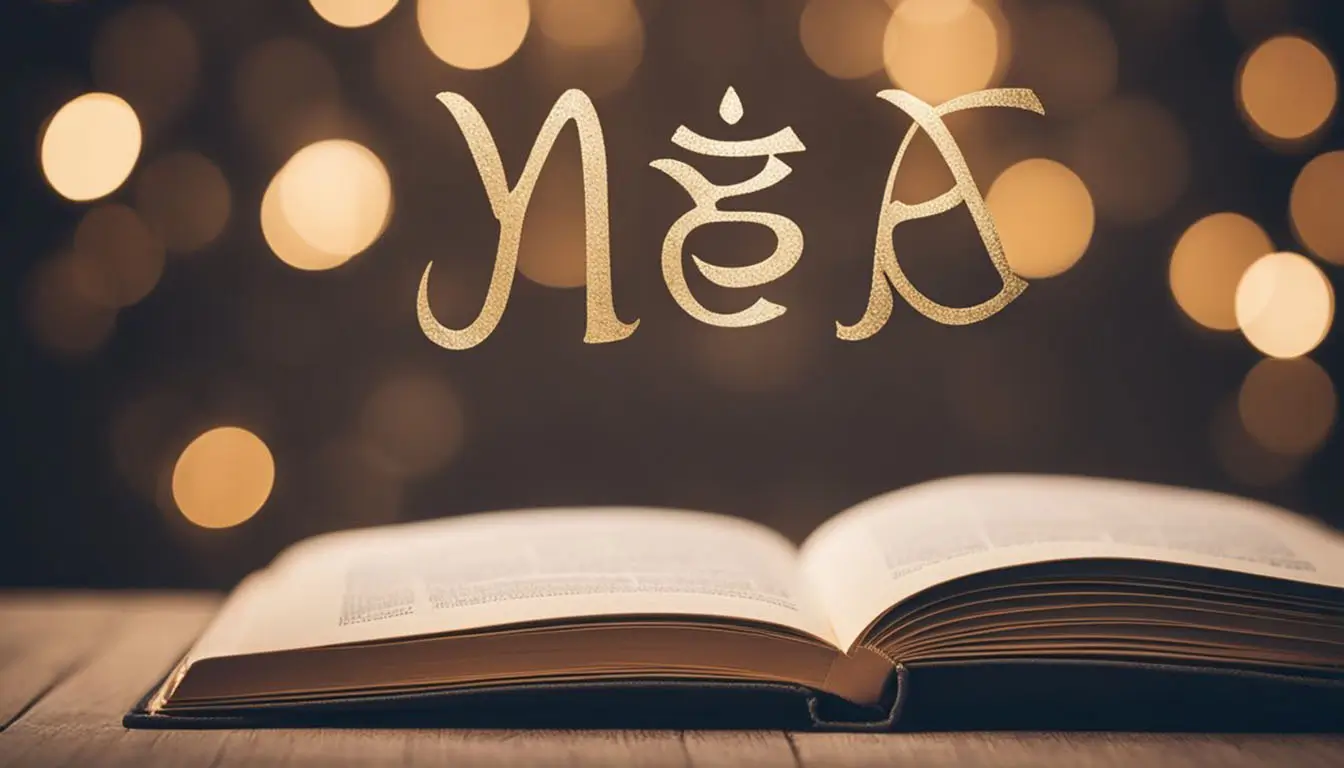 As a beginner, it can be overwhelming to hear unfamiliar Sanskrit terms during a yoga class. Here are some common yoga terms and their English translations to help you understand the practice better.
As a beginner, it can be overwhelming to hear unfamiliar Sanskrit terms during a yoga class. Here are some common yoga terms and their English translations to help you understand the practice better.
- Asana: This refers to yoga poses. Each asana has a specific physical and mental benefit.
- Pranayama: Involves regulating the breath, aiding in mental relaxation and enhancing concentration.
- Chakras: These represent energy hubs within the body. There are seven chakras, each associated with a different color and meaning.
- Om: This is a sacred sound and symbol that represents the universe’s essence. It is often chanted at the beginning and end of yoga classes.
- Savasana: This is the final relaxation pose at the end of a yoga class. It helps to calm the mind and body.
- Vinyasa: This is a flowing sequence of yoga poses that are synchronized with the breath.
- Namaste: This is a common greeting in yoga that means “I bow to you.” It is often said at the end of a class as a sign of respect and gratitude.
Learning these terms can help you better understand the practice of yoga and deepen your connection to it. Don’t worry if you don’t remember them all at first; with time and practice, they will become more familiar to you.
Frequently Asked Questions
 What should a beginner of yoga learn first?
What should a beginner of yoga learn first?
As a beginner, it’s important to focus on the basics of yoga. Start by learning proper breathing techniques, also known as pranayama. This will aid in maintaining a composed and concentrated state during your session. Next, learn some basic yoga poses, or asanas. You can start with simple poses like downward dog, child’s pose, and mountain pose.
How to do yoga step by step for beginners?
When starting yoga, it’s important to take it slow and focus on proper alignment. Begin with a warm-up, such as sun salutations, to get your body ready for the practice. Then, move on to some basic poses, holding each pose for a few breaths. Remember to breathe deeply and focus on your body’s alignment. End your practice with a cool-down, such as savasana, to help your body relax and rejuvenate.
What is yoga introduction for beginners?
Yoga integrates physical poses, breathing exercises, and meditation to enhance general health and wellness. For beginners, yoga can be a great way to improve flexibility, strength, and balance, while also reducing stress and anxiety.
How do I start yoga by myself?
Starting yoga on your own can be challenging, but it’s definitely possible. Begin by finding a quiet and comfortable space to practice. Then, start with some basic poses and focus on proper alignment and breathing. You can also use online resources, such as videos and tutorials, to help guide your practice.
What are some free resources for yoga beginners?
There are many free resources available for yoga beginners. Online platforms like YouTube and Yoga Journal offer free videos and tutorials for beginners. You can also find free yoga apps, such as Down Dog and Yoga for Beginners, that offer guided practices.
What are some beginner-friendly yoga poses?
There are many beginner-friendly yoga poses that you can try, including downward dog, child’s pose, mountain pose, and warrior 2. These poses are simple and easy to learn, while still providing great benefits for your body and mind.
I hope you found this step-by-step introduction to yoga for beginners useful. By practicing yoga it will help you to focus on the your body, mind, and spirit, and can help you achieve a state of balance and harmony in your life.





